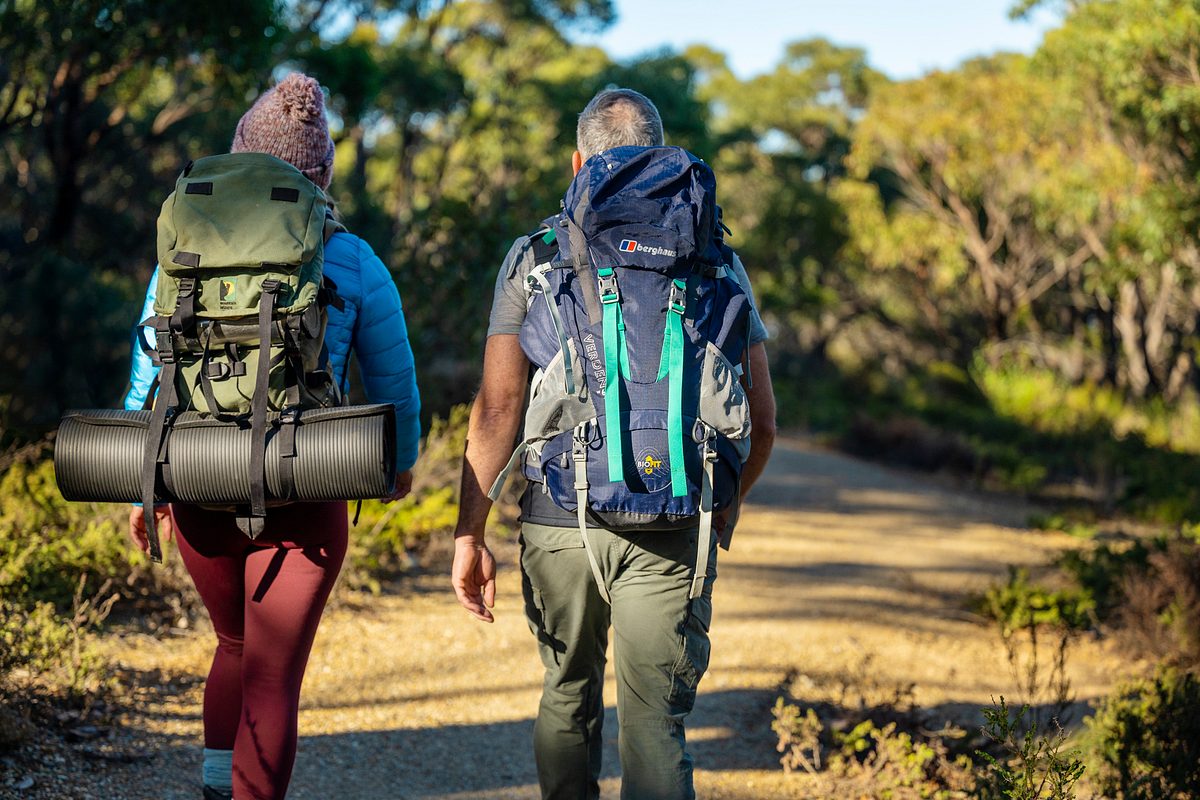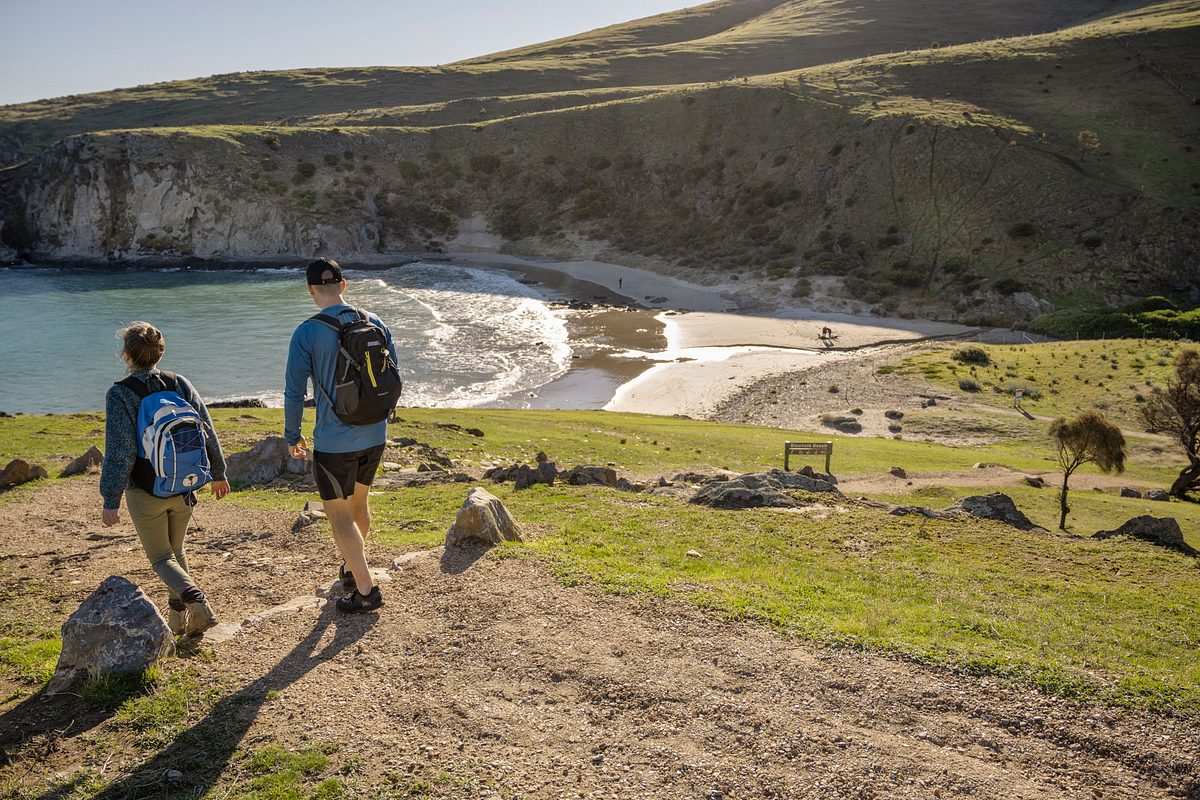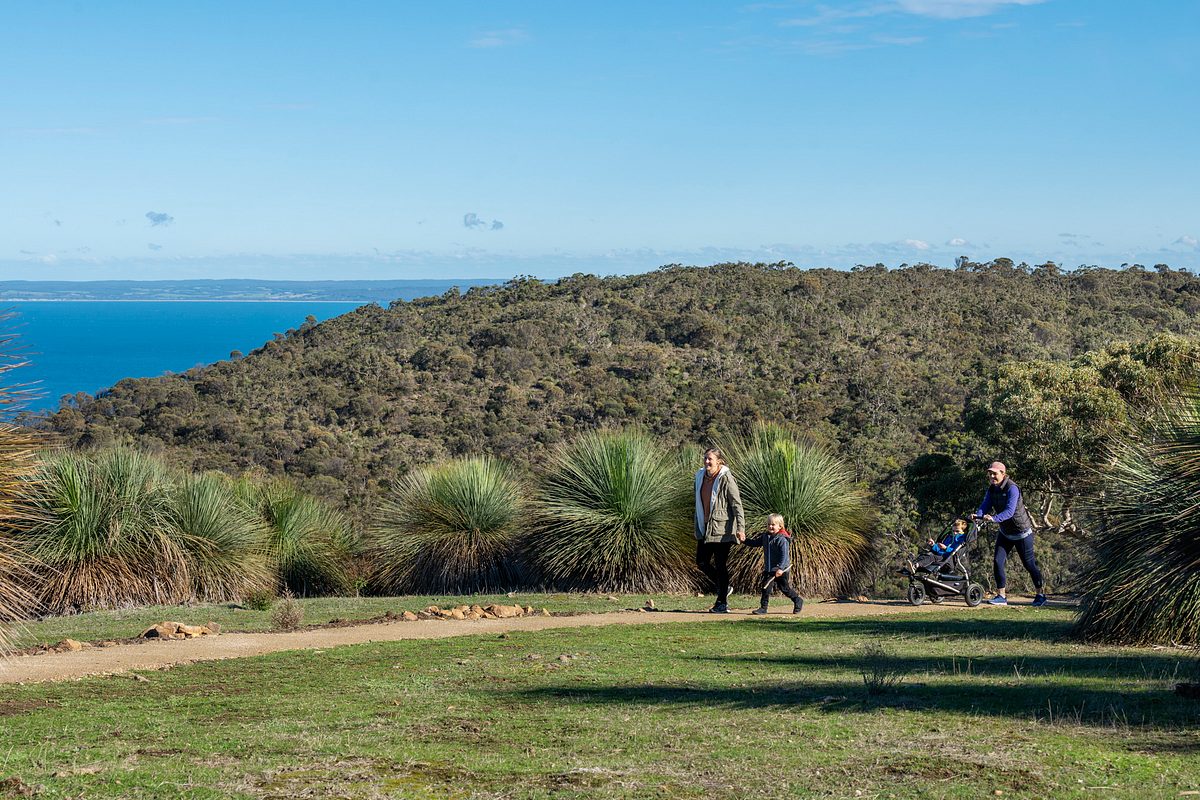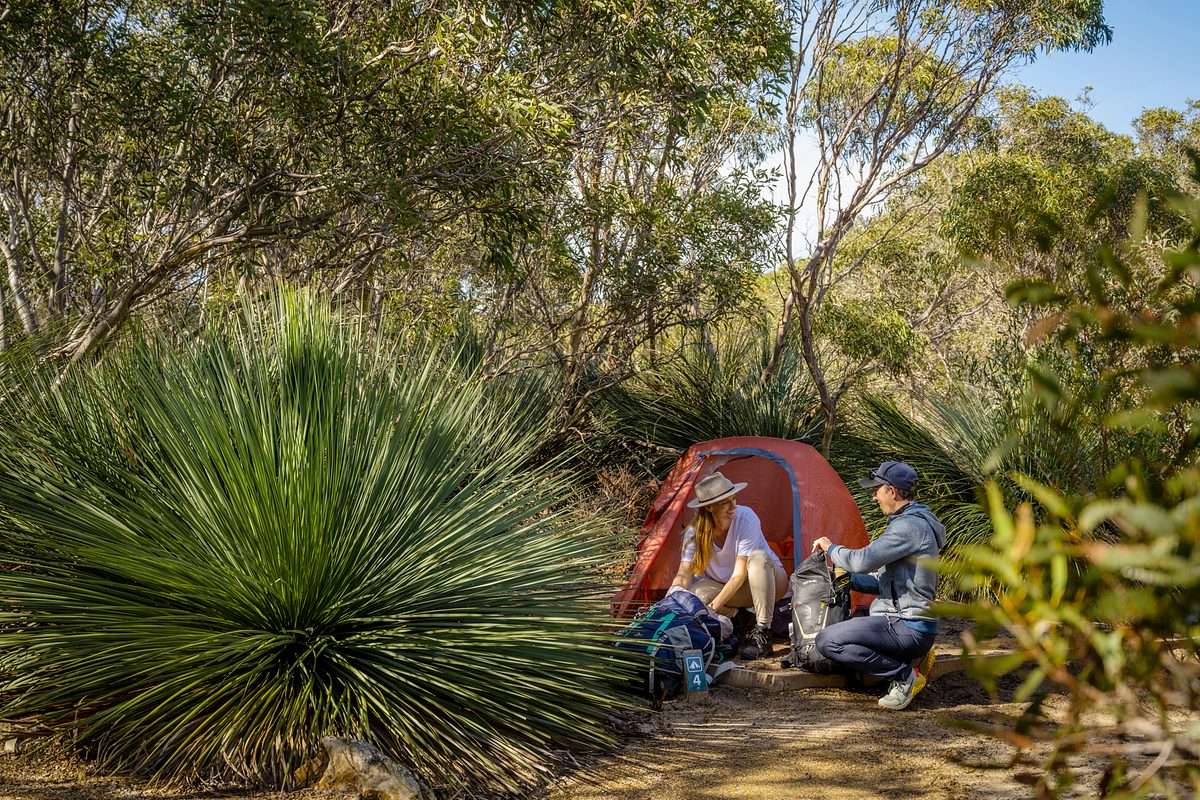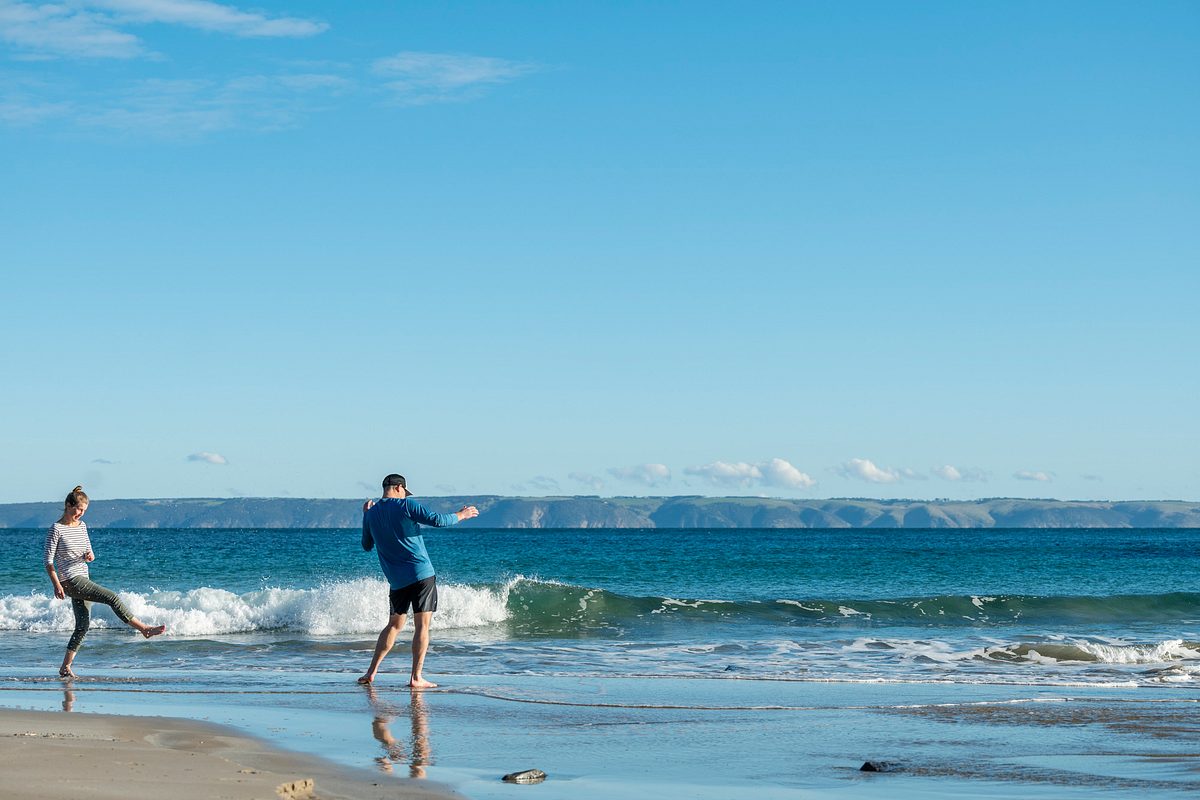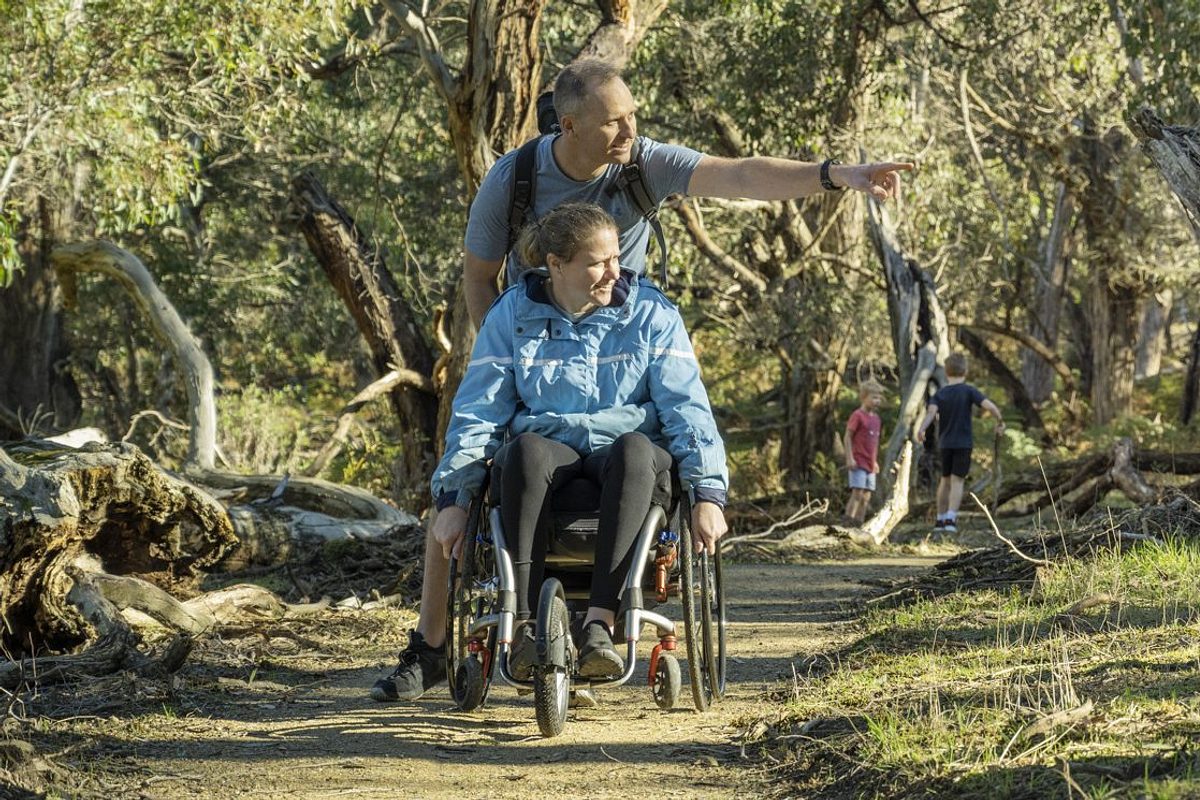
Wild South Coast Way
on the Heysen Trail
Walk it your way
The Wild South Coast Way on the Heysen Trail (WSCW) beckons to all those who long for a true adventure in nature. This 74 km walking trail between Cape Jervis and Victor Harbor on the Fleurieu Peninsula in South Australia showcases the rugged coastline, native wildlife, and the lush natural surroundings.
And the best part? This incredible adventure is less than two hours from Adelaide, making it the perfect escape from the hustle and bustle of city life. Whether you choose to take a short walk or challenge yourself to the full five-day, four-night journey, the WSCW allows you to choose your own adventure and explore this stunning part of South Australia at your own pace.
Each day of the walk delivers a new experience and challenge, starting with views across to Kangaroo Island before the full nature experience begins, encouraging the walker to‘tune in’ to nature and‘tune out’ of stress.
The trail connects the parks along our breathtaking southern coastline from Cape Jervis to Victor Harbor including Deep Creek National Park, Ballaparudda Creek Recreation Park and Newland Head Conservation Park. If doing a multi-day walk, camp at one of the campgrounds along the way: there are four walk-in only campgrounds and four drive-in campgrounds on or near the trail. As part of the 1,200 km Heysen Trail, your adventure doesn’t have to end here!
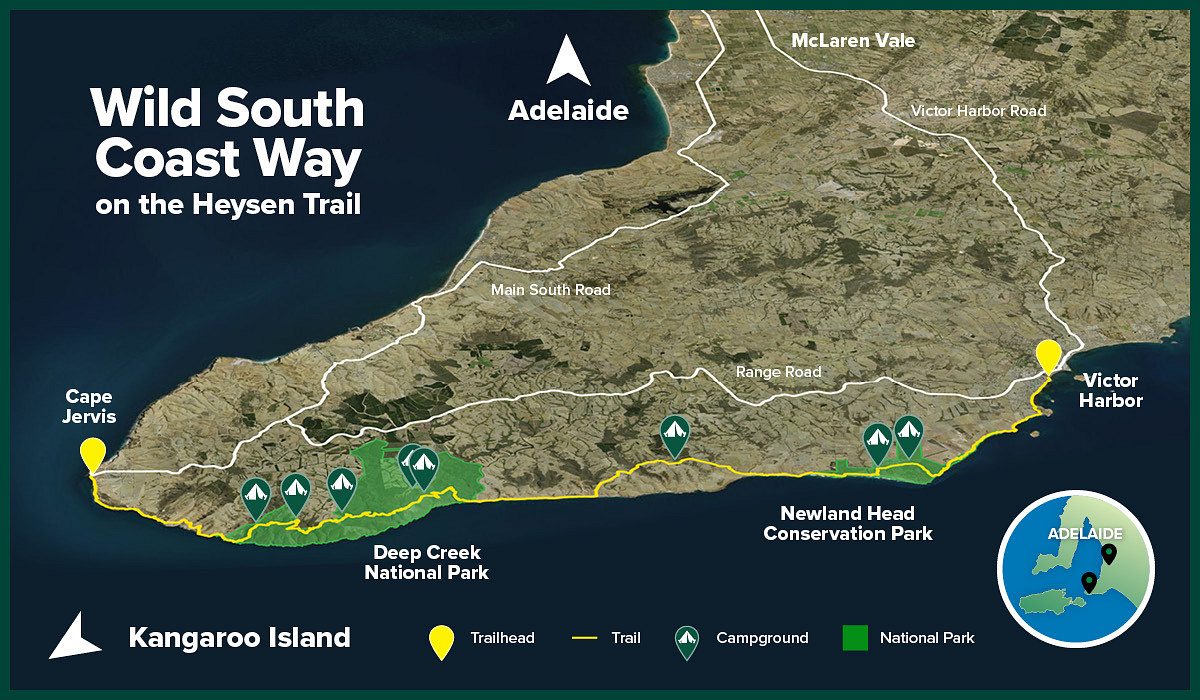
Plan your adventure
Accomodation
Camping not quite your style?
Southern Ocean Retreats offer a range of accommodation options so you can enjoy nature in comfort. Whether you’re looking for a cosy family cottage or a secluded retreat, there’s something to suit every style and budget.
Other types of accommodation, ranging from off-grid cabins to luxury retreats, are available outside of the park — visit the South Australia tourism website or the Fleurieu Peninsula website. Some accommodation providers offer shuttle services to the Wild South Coast Way.
Walking on Ramindjeri Ruwi
The Wild South Coast Way traverses Ramindjeri Ruwi (land), with connections to Kaurna Country at Cape Jervis. Ramindjeri are one of eighteen Lankinyerar (tribes) of the Ngarrindjeri Nation, whose Country spans the lower River Murray, Coorong and western Fleurieu Peninsula.
The trail retraces the final footsteps of an ancient ancestor named Ngurunderi, who is said to have shaped the landscapes, spiritual identities and cultural traditions of the Ngarrindjeri palak (people).
In Ngurunderi’s footsteps, the Ramindjeri palak followed – caring for Country according to the laws and customary rights and obligations he gave to them.
SA National Parks Tours App
The SA National Parks Tours App shares cultural stories of the area, information about things to see and helpful hints for those walking along the Wild South Coast Way. Hear from Ramindjeri elders and park rangers, identify plants and animals along the trail, and take part in guided meditations. Download the app before you depart.
